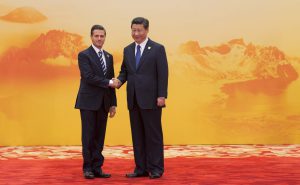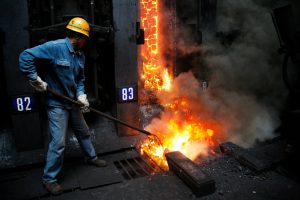Plastics company Fuling Global Inc. announced its plans to move its operations from China to Mexico, investing US$2 million dollars on a new facility in Monterrey, in the northeast of the country. The company started producing paper straws and paper cups for the US market in 2019.
“The ongoing US-China trade tensions cast uncertainties for our export business to the US market, our largest segment,” Guilan Jiang, Chairwoman of Fuling Global, warned last year in a press release. “The Mexico Factory offers certain attractive benefits for us, including zero tariff on trade between the US and Mexico as well as low labour and transportation costs.”
$3.5billion
the jump in the value of Mexico's exports since the US-China trade war began
According to UN statistics, Mexico has exported an extra US$3.5 billion in goods since the trade war began in summer 2018, mostly in the agri-food, transport equipment and electrical machinery sectors.
On December 13, President Trump confirmed he had reached an preliminary deal that, if signed, would provide greater protections to US companies operating in China. He would also reduce some US tariffs and cancel those planned. However, economists say the troubles are far from over as that the tariffs will drag for years, and continue to generate uncertainty and drive down investment, Bloomberg reported.
Specialists say Mexico had already gained ground in exports but a UN report specifically attributes this increase to the trade war. Countless articles have declared Mexico a clear “winner” of the feud.
Two years ago and with costs rising, US companies operating in China began relocating to northern Mexico and, more recently, Chinese companies began moving there too, said Adriana Eguia, former CEO of Tijuana’s Economic Development Corporation.
A large and cheap labour force, free trade agreement and proximity to the US make Mexico’s northern cities appeal to small and medium size business.
Trade war & Mexico: what’s really going on?
In July 2018, the Trump administration announced a 25% tax on more than 200 goods imported from China, including airplane and car parts, electronics, seafood, and medical devices. Another round of tariff hikes in September 2019 added taxes on clothing, shoes, nappies, and more.
“It’s very hard for a company to be competitive if it has to pay a 25% tariff to export to the US, so they would rather move somewhere else,” said Alessandro Nicito, an economist at the UN’s Conference on Trade and Development (UNCTAD).
So many companies started moving production out of China. “If a firm perceives that the tariff is permanent, they will move. If they think it’s temporary, they will just absorb the cost of the tariff themselves,” Nicito said.
This logic of using trade policy as a weapon for non-economic motivations is bad news
Many companies weighed the decision and moved their factories to nearby countries in Southeast Asia like Vietnam, Taiwan and Korea. Others chose Mexico because of its proximity to the US and low tariffs.
There has been a decline in investment in the manufacturing industry and this has been a drag on global growth for everyone, including Mexico
“This is creating a space for opportunity for Mexican business owners,” said Xavier Rivas, vice president of PIMSA, a group of industrial developers in northern Mexican border states.
“It’s an economic advantage for the area because there is going to be investment, employment and the market is going to grow,” added Victor H. Delgado, who has worked for 35 years in Mexicali’s export industry.
Once a company has made the decision to move to Mexico or another country because of tariffs, it is unlikely to reverse its decision.
The drawbacks
On paper, Mexico is a trade war winner. But economists warn that the bigger picture could spell trouble.
Trump’s ‘America First’ attitude has led to uncertainty in the global economy that could offset Mexico’s slight increase in exports. The US$3.5 billion increase in exports is less than 1% of the US$450 billion exported in 2018.
The US-China trade war is one of many examples of Trump using trade policy as a bartering chip for other foreign policy decisions. And he has done the same to Mexico. In June this year, he threatened to increase tariffs to pressure Mexico to cooperate on immigration enforcement.
“This logic of using trade policy as a weapon for non-economic motivations is bad news,” said economist Otaviano Canuto, a former World Bank official.
This approach to trade policy contributes to volatility in global markets. Uncertainty usually means a decline in investments, particularly in manufacturing, Canuto explained.
“There has been a decline in investment in the manufacturing industry and this has been a drag on global growth for everyone, including Mexico,” Canuto said.
Some are wary of Chinese companies taking advantage of Mexico.
“We have to be very careful with this, and see that they don’t use Mexico just as a platform to export to the US,” said Rivas. “These factories should contribute to the local economies and hire local workers for Mexico to get the most out of this,” he added.
What’s next?
Mexico is also facing uncertainty. On Thursday, the US congress passed the new US-Mexico-Canada agreement (USMCA), NAFTA’s replacement, which must now go to the senate, where is expected to pass.
The USMCA maintains many of the same clauses as NAFTA but has stricter laws on environmental and labour protections, which means Mexico would have to implement higher wages in order to sell cars to the US market.








